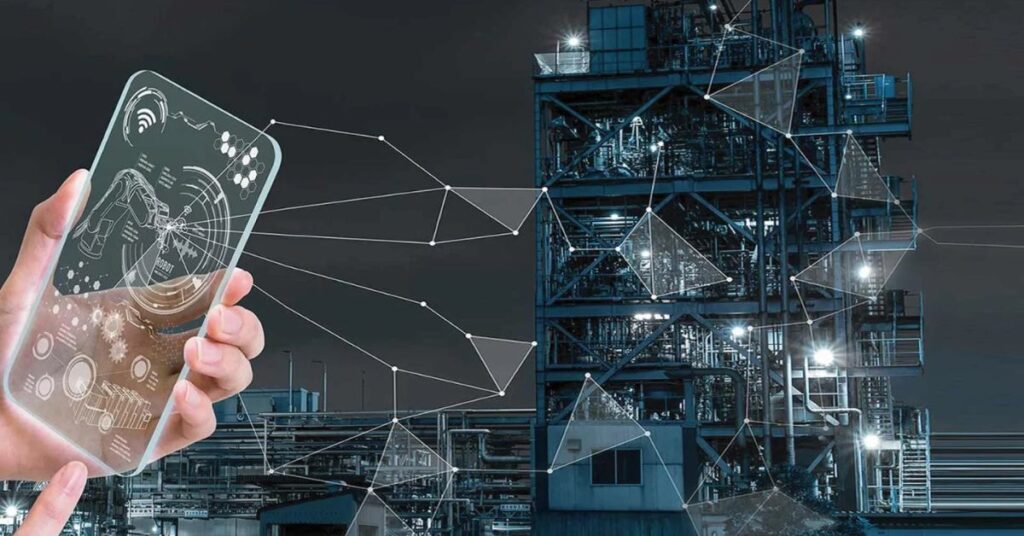
A2P calling, or Application-to-Person calling, is a powerful communication tool used by businesses to reach customer engagement. It involves automated voice calls initiated by software applications rather than human operators. This technology helps companies send notifications, alerts, and reminders to many people. It streamlines the process.
Consider this you get a call that stops a fraudulent credit card charge. You get a reminder for a doctor’s appointment you overlooked recently. These are examples of A2P calling. Businesses’ communication with us undergoes a subtle yet profound transformation.
A2P calling is digital transformation in industries like banking, healthcare, and hospitality. It boosts security by verifying users. It also makes customer service better with automated updates. As technology advances, A2P is becoming more sophisticated. It now integrates with AI and voice-activated devices to create more personalized experiences.
What is A2P calling?
A2P calling, or Application-to-Person calling, is a way for businesses to reach customers. It uses automated voice calls started by an app or software. A2P lets companies send automated messages. It can reach many people at once, unlike traditional calls. These include notifications, reminders, and alerts. This technology is vital to modern digital strategies. It lets businesses engage their customers better.
A2P calling leverages Voice APIs and VoIP technology to facilitate these automated communications. It’s part of a larger digital ecosystem. That includes A2P Messaging, chatbots, and other customer support tools.
Businesses can enhance their omnichannel strategy by adding A2P calls to their communication plan. It will ensure consistent, timely interactions across various touchpoints. This technology makes the customer experience better. It also helps companies meet regulations and improve their efficiency.
We explain Application to Person (A2P).
The technical backbone of A2P involves a complex interplay of various technologies. Voice APIs establish a foundation that enables apps to make autonomous calls. These APIs work with Session Initiation Protocol (SIP) and Voice over Internet Protocol (VoIP). They route calls over the internet or traditional PSTN networks. Advanced features like Text-to-Speech (TTS) and speech recognition improve A2P. They make communication more natural and interactive.
One of the key advantages of A2P calling is its versatility in message delivery. While simple voice messages are common, the technology also supports more sophisticated interactions. For example, businesses can use Interactive Voice Response (IVR) systems. These systems let customers navigate menu options using Dual-Tone Multi-Frequency (DTMF).
A2P can work with cloud platforms. It helps businesses scale their communication. It also uses data analytics to personalize customer interactions.
Understanding the Versatility of A2P Calling for Various Industries

The adaptability of A2P makes it a valuable tool across numerous sectors. From finance and banking to healthcare and hospitality, businesses are finding new ways to use this tech in their operations. A2P calling is not just for sending messages. It’s about making meaningful customer connections, improving efficiency, and driving business growth.
A2P is revolutionizing how businesses engage with their customers. Retailers send targeted special offers to consumers through customized voice messages. This increases the chance of conversion. The government disseminates timely updates to citizens through streamlined communication channels. This delivers key details on time.
Finance and Banking
In finance and banking, A2P is vital for security and customer service. Banks deploy A2P calls to dispatch instant warnings about suspicious transactions.
This prompt notice slashes the risk of financial loss and boosts trust. Also, A2P is vital for customer verification. It is used in two-factor authentication (2FA). This adds security to sensitive financial transactions.
Healthcare
The healthcare industry has adopted A2P calling. It aims to improve patient care and efficiency. Healthcare notifications via A2P calls include appointment reminders, medication alerts, and follow-up instructions.
These automated calls reduce missed appointments and improve medication use. They also boost patient engagement. In the age of telemedicine, A2P calling aids voice-activated devices for remote health checks. This helps make healthcare more accessible.
Traveling and Hospitality
In the travel and hospitality sector, A2P has transformed the guest experience. Hotels and airlines use this technology to send booking confirmations, update itineraries, and offer custom services.
For instance, a hotel might use an A2P call to welcome guests upon check-in, share info about their stay, or gather feedback after their visit. This communication boosts the customer experience. It increases satisfaction and loyalty in a competitive industry.
A2P Calling for User Verification
User verification is crucial for digital security. A2P calling has become a powerful tool for this purpose. Two-factor authentication (2FA) often uses A2P calls to send one-time passwords (OTP) to users. This adds an extra layer of security on top of the usual username and password combinations. This method works well. It uses something the user knows (their password) and something they have (their phone). This makes it much harder for unauthorized people to gain access.
The process is this: when a user logs in or does a sensitive transaction, the system generates a unique OTP. It sends the OTP via an A2P call. The user then enters this code to verify their identity.
This method provides robust security and an intuitive user experience. It needs no extra apps or complex passwords. As cyber threats grow, A2P calls for user verification. They are vital to businesses’ digital strategies.
A2P Calling’s Future: Emerging Trends and Technologies

The future of A2P calling is closely tied to advancements in artificial intelligence and machine learning. There is a growing use of chatbots and AI in A2P messaging. They allow for more advanced, context-aware interactions. These AI systems can understand natural language. They can predict user needs and provide personalized responses. This greatly improves the customer experience.
As AI evolves, we can expect A2P to become smarter. It will handle complex customer inquiries and tasks.
Another trend is the rising use of voice-activated devices with A2P calling. As smart speakers and virtual assistants become more common, businesses are finding new ways to use them. They’re exploring how these devices can help with customer communication. This could create new types of voice campaigns and interactive experiences. It blurs the line between traditional A2P and more advanced conversational interfaces.
Advancements in speech recognition and text-to-speech (TTS) make A2P calls sound more natural. They also make the calls sound more human-like. This helps to increase user engagement and acceptance.
FAQ’s
What does A2P mean?
A2P stands for Application to Person. It’s like when your phone gets a message from a computer program instead of a real person. Think of it as apps talking to you directly.
What is an example of A2P?
That’s A2P in action! It could also be a robocall reminding you about a doctor’s appointment or an automated voice telling you your flight’s delayed.
What is an A2P flash call?
A2P flash calling is a sneaky smart way to verify your phone number. The app calls you and hangs up super fast you don’t even answer! It just checks if your phone got the call. It’s quick, easy, and doesn’t cost you a thing.
How to stop A2P calling Alexa?
If Alexa’s bugging you with A2P calls, you can tell her to pipe down. Just say, “Alexa, turn off communications.” Or hop into your Alexa app, find the Communications settings, and toggle off the features you don’t want.
Conclusion
Business communication transformed in the digital age with A2P calling. This technology has shown its value in many industries in the USA. It helps improve customer engagement, security, and operational efficiency. This calling isn’t about sending automated messages. It’s about making connections, providing value, and improving the customer experience.
The flexibility of this calling makes it a must-have tool for businesses. It helps them stay competitive in today’s fast-paced digital world. Many sectors, such as banking, healthcare, and travel, use this calling. It sends transaction alerts, healthcare notifications, and improves the travel experience. As technology improves, this calling method will get even more advanced. It will integrate with AI, voice-activated devices, and other new technologies.
